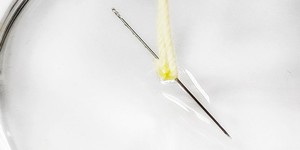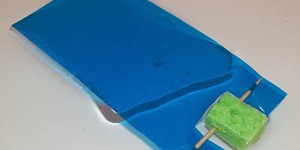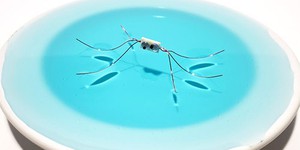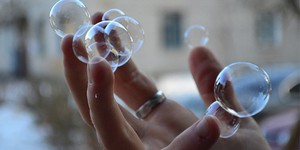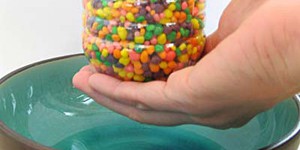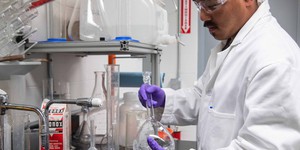Does Wet Hair Float or Cling?
Summary

Introduction
Have you ever noticed how hair moves freely when it is under the water, but clings together as soon as it emerges out of the water? Not only human hair does this; when wet dogs shake themselves after a swim, their hair clings together in strands. Try this activity to see why wet hair is far less fluffy than dry hair!
Materials
- Paintbrushes, the round ones work best. If available, select brushes with different thicknesses, types of bristles, etc.
- Bowl or sink filled with water
- Towel
- Area that can get wet
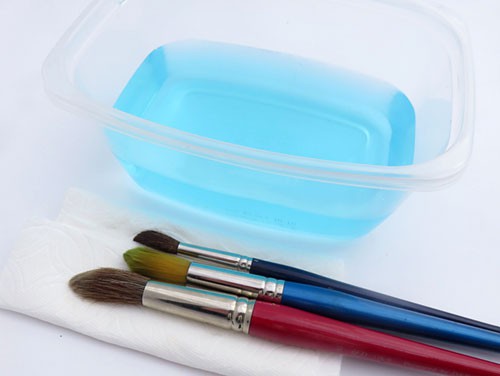 Image Credit: Sabine De Brabandere, Science Buddies / Science Buddies
Image Credit: Sabine De Brabandere, Science Buddies / Science Buddies
Instructions
- Start with a dry paintbrush. Observe its bundle of bristles.What shape is it? Is it fluffy or slick? Can you easily distinguish single bristles? What is holding the bristles together? How easy is it to pull one to the side?
- In a moment, you will submerge the brush in water.Do you expect the bundle of bristles to look different? If so, how and why do you think this happens?
- Submerge your brush and observe the bundle when surrounded by water.Did the shape change? Does it look fluffier or slicker? Can you distinguish single bristles as easily? How do you think an individual bristle will respond if you try to pull it to the side? Why?
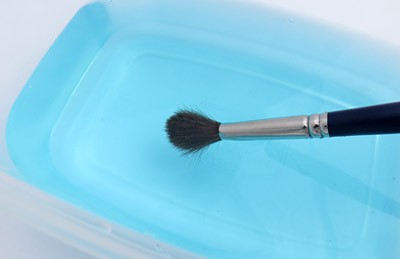 Image Credit: Sabine De Brabandere, Science Buddies / Science Buddies
Image Credit: Sabine De Brabandere, Science Buddies / Science Buddies
- Get your hands in the water and feel how easily you can pull one bristle to the side.Was this as predicted? If you had an explanation, would you like to change it? What do you think the bundle of bristles will look like when you take it out of the water?
- Remove your brush from the water and observe.What shape is the bundle of bristles? Is it fluffy or slick? Can you easily distinguish single bristles? Why do you think it looks this way when wet but not submerged? How easy is it to pull one bristle to the side?
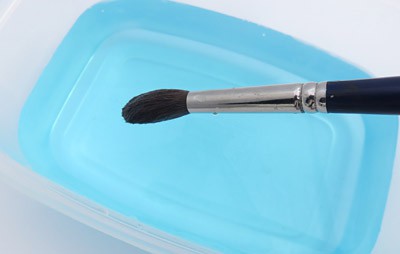 Image Credit: Sabine De Brabandere, Science Buddies / Science Buddies
Image Credit: Sabine De Brabandere, Science Buddies / Science Buddies
- You only experimented with one paintbrush. Maybe a different paintbrush will be different! Repeat the experiment with another paintbrush.Does the same thing happen?
What Happened?
The bundle of bristles was probably a little fluffy when it was dry or submerged in water. You could probably easily see the single bristles and pull one to the side. This is because the particles around it can freely move in all directions, allowing the bristles to flutter out in whatever way they feel like.
However, you probably could not do this with a wet bundle of bristles once it was no longer submerged. When pulling the bristles out of water, water particles (H2O molecules) stick to them. That is what we call "wet." As water particles like to be surrounded by other water particles, they bundle up. As such, the individual wet bristles remain tightly packed. The water particles on the outside feel pulled towards water particles inside the bundle of bristles. It makes it harder to pull one bristle away.
A wet brush exposed to air dries as the water particles evaporate, and dry bristles can again move freely because they are submerged in air.
Digging Deeper
Water can also be called H2O because the smallest amount of water that is still water (called a water molecule) consists of two hydrogen (H) atoms and one oxygen (O) atom. Once the H2O molecule is broken, you no longer have water. This molecule is tiny—an average droplet of water (0.05 ml) contains about 1.5 sextillion or 15,000,000,000,000 billion molecules of H2O!
It sometimes looks like there is a thin film around a droplet of water that holds it together. This is because of surface tension. H2O molecules attract each other and like to hold onto each other closely. This is called cohesion. The molecules can move around alongside each other, but they stay connected. When an H2O molecule is in the middle of a droplet, it feels attracted to all of the surrounding H2O molecules. It is pulled in all directions equally, so there is no preferred direction to move into. That is not the case for an H2O molecule located on the edge of the droplet—this molecule feels attracted to those inside the droplet, but none on the outside. It feels an inward attraction, thus only moves inward, holding the droplet together.
If you look at wet non-submerged hair, you can see the effect of cohesion and surface tension. When pulling the bristles out of water, H2O molecules stick to them. As water is a cohesive substance, these molecules like to stick together and pack closely. As such, the individual wet bristles remain tightly packed. The H2O molecules on the outside feel pulled towards H2O molecules inside the bundle of bristles. It makes it harder to pull one bristle away.
Ask an Expert
For Further Exploration
- Pay attention to people's hair in the swimming pool. How does it move when it is still dry? How does it move when submerged in the water? How does it move when the person emerges from the pool? Why would this happen?
- Observe the hair of animals when wet. Does it also cling together when wet and exposed to air?
- Find other examples where the wet version of an item sticks together more than the dry version. Do you think this can also be explained by cohesion and surface tension?
Related Resources
Project Ideas
Activities
Links
- Blog Post: Measuring Surface Tension with a Penny: Weekly Science Spotlight
- Blog Post: Dancing Water Droplets


